ASCO "Martial Arts" value -added | CheckMate -274 Study MIBC Asian group data re -proved UC postoperative assist immunotherapy advantage
Author:Cancer Channel of the Medical Time:2022.06.23
*For medical professionals for reading reference

The survival period of no disease has been extended by nearly 3 times, and the risk of disease recurrence and the risk of death have been greatly reduced
At the ASCO GU conference in early 2021, Checkmate -274 studied [1] data for the first time to bring surprises -Nawli Ulitaba became the first and currently the only global III clinical study confirmed that it was used for urinary epithelial cancer ( UC) Auxiliary therapy can significantly reduce the immunotherapy of patients' postoperative recurrence risk, and breaks the lack of UC postoperative assisted treatment choices in one fell swoop, involving the dilemma of lack of high -level evidence -based medical evidence support. At the ASCO Annual Meeting 1 year later, Checkmate -274 studied muscle layer infiltration bladder cancer (MIBC) Asian group data [2] again stunned -the beneficiaries are consistent with the ITT crowd, and the extension of the disease -free survival period (DFS) is extended nearly approaching Three times, the risk of disease recurrence and death is significantly reduced. On this opportunity, Professor Huang Jian, director of the Department of Urology of Sun Yixian Memorial Hospital of Sun Yat -sen University in the "medical community", deeply interpreted the CheckMate -274 research and MIBC Asian group data to open up the cutting -edge field of UC immunotherapy.
Demand deep: MIBC postoperative assisted treatment dilemma is difficult to break
Professor Huang Jian introduced the difference between urinary tract cancer (UC) and bladder cancer. UC can occur on the coverage of the urinary tract of urinary system throughout the urinary system, and its incidence of bladder is the highest, reaching 83%of all UC. From the perspective of pathological types, UC accounts for more than 90%of the bladder cancer, so the epithelial cancer of the bladder urinary tract is the most common pathological type in bladder cancer [3]. Based on tumor infiltration depth, bladder cancer can be divided into: non -muscle infiltration bladder cancer (NMIBC) and muscle layer infiltration bladder cancer (MIBC).
"MIBC and NMIBC are only the difference, but the treatment and prognosis can be described as a thousand miles. They are completely different tumors." Professor Huang Jian emphasized that "the reason why MIBC attracts attention lies in its high degree of malignancy, rapid progress, and rapid progress. Easy recurrence and transforming biological characteristics. MIBC is a malignant tumor with higher mortality in patients in the urinary system. "For MIBC patients who have metastasized, the 5 -year total survival (OS) rate is only 5%to 20%, even if even During the first diagnosis, the lesion is limited to the MIBC patients of the bladder. After the treatment of radical surgery, there is still about 50%of the chances of recurrence [4], and the long -term efficacy needs to be improved.
For MIBC patients who still have surgery opportunities, the "full management" of neo -assisted treatment+radical bladder resection+postoperative adjuvant treatment is the key to improving long -term survival benefits. The scheme is often based on platinum drug chemotherapy, but it is because some patients cannot withstand severe treatment related adverse reactions caused by cytotoxic drugs, and for postoperative assisted chemotherapy drug intervention, chemotherapy sensitivity, and treatment cycle. There is no consensus point of view. After surgery, the auxiliary chemotherapy has not yet formed a unified standard, and clinical applications have considerable limitations.
Explore to New: Immunode therapy data again amazing again
CheckMate -274 is a random, double -blindness, placebo control, multi -center phase III clinical study, which aims to evaluate the efficacy and safety of Nawli Ulitizer for comparison of the auxiliary treatment of patients with high recurrence risk after cure surgery. sex. In terms of research and design, Professor Huang Jian said that first of all, among the 709 patients included in the study, including patients from multiple Chinese research centers, which means that the research situation may have high clinical guiding significance for patients in my country. At the same time, as the "main group" of patients in the group, the number of MIBC patients reached 560, accounting for 79%of all patients.

Figure 1: Study the baseline of patients in the group
The results of the study show that the DFS benefit of the MIBC Asian group is consistent with the ITT crowd:
The MDFS of the Nawuli Mipidica group is as high as 25.8 months, nearly 3 times the control group (9.4 months), reducing the risk of recurrence or death by 39%
According to the 12 -month DFS rate data, it can be seen that the Nawuli Uyopoly Mipida group reaches 66.1%, and the control group is only 44.6%.
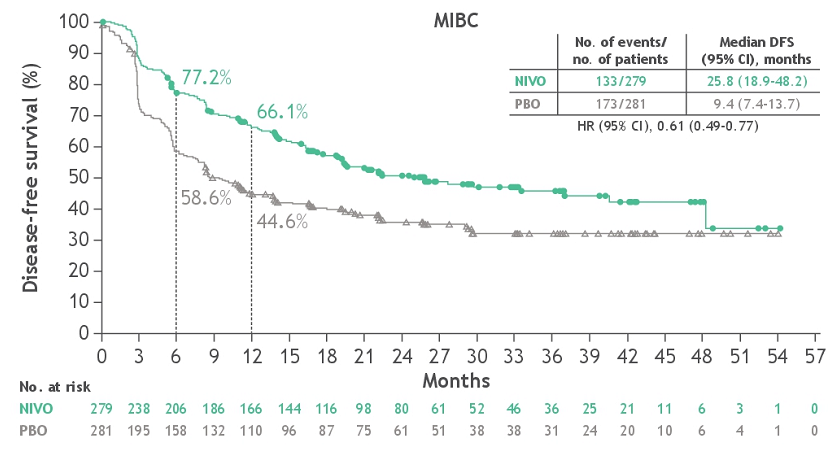
Figure 2: MIBC Asian group DFS data
Regardless of the patient's tumor PD-L1 expression level, DFS benefits can be observed
1. Among patients with ≥1%of PD-L1 expression, Nawuli Ulitabitarian recurrence of the disease or the risk of death by 54%
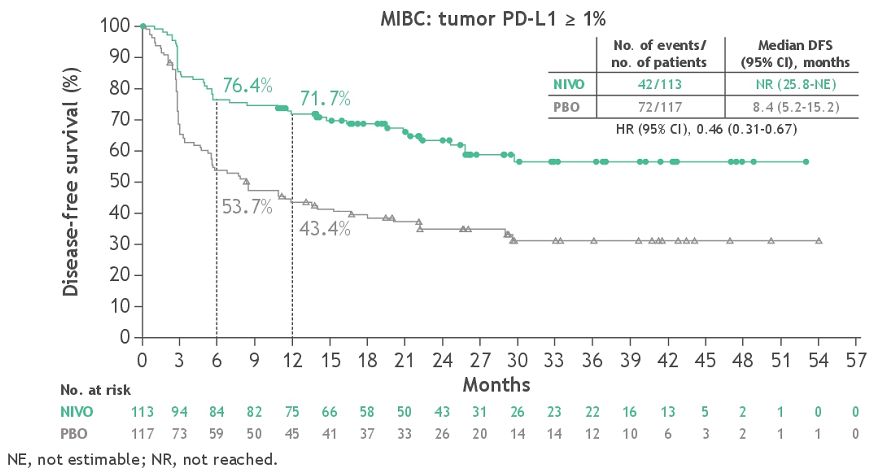
2. Among patients with <1%of PD-L1 expression, Nawuli Ulitaba reduces the risk of recurrence of the disease or reduced the risk of death by 30%
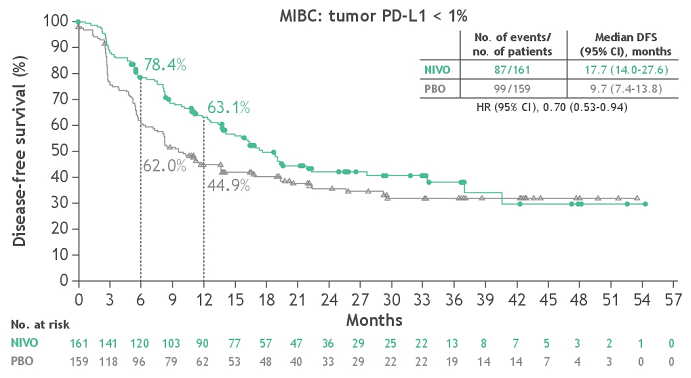
Figure 3: MIBC sub-group PD-L1 expressing different patients DFS data
In the pre-set sub-group, the DFS benefit trend of MIBC patients is observed. The layered factors include race, pathological staging, and whether they have accepted neo-assisted chemotherapy, PD-L1 expression, etc.
The Mnutrfs of the Nawuli Mipidica Group is nearly 3 times the control group (25.8 months vs. 9.7 months)
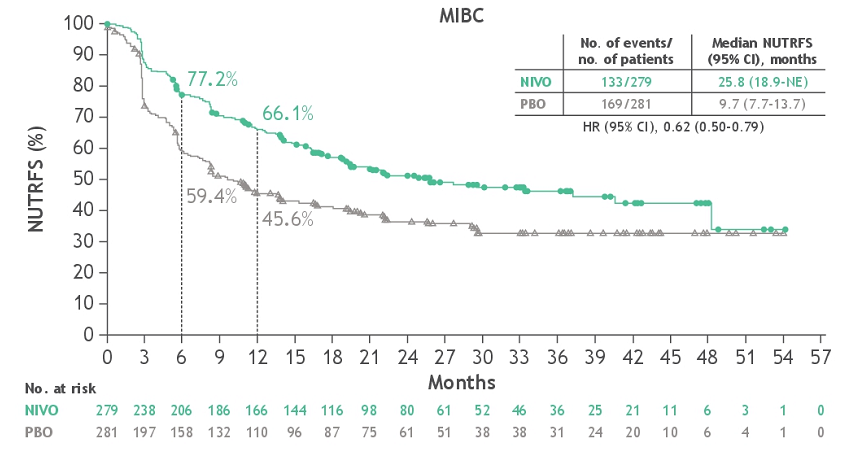
Figure 4: Nutrfs analysis results of MIBC sub -group patients
Compared with the control group, the Nawuli Mipidica group extended nearly a year and a half (37.2 months vs.19.4 months)
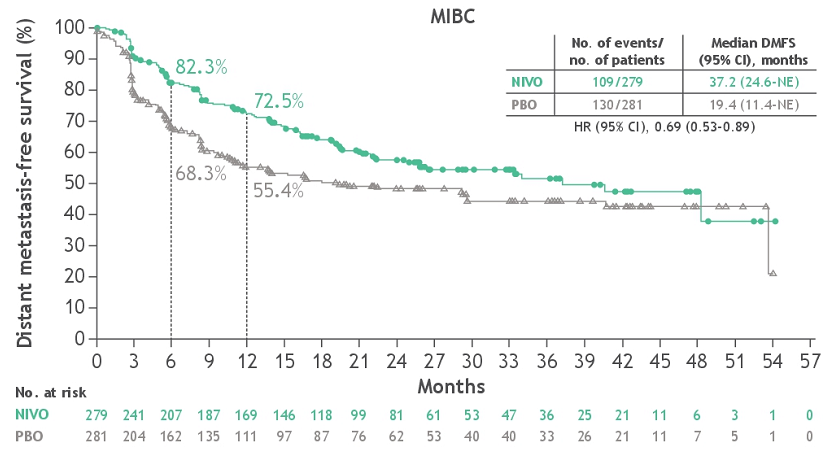
Figure 5: DMFS analysis results of MIBC sub -group patients
In terms of security, in the MIBC Asian group, 17%and 6%of the treatment of related adverse events (AES) in the Nawuli Ulitab and the control group, respectively. The general safety signal of patients is consistent with the whole population.
Is the era of UC's "preferred" immunodetic auxiliary treatment? "The data is exciting! Previously, the auxiliary treatment after the bladder resection, whether it is chemotherapy or immunotherapy, has not received positive results." Professor Huang Jian has a very high evaluation of the CheckMate -274 research. "This The research is the first time that the effectiveness and safety of immunoaste therapy is very significant. "In today's MIBC Asian group analysis data, the DFS benefits consistent with the ITT population have been observed, and it further supports Nawuli Ulitabistab Auxiliary therapy can be used as a conclusion of postoperative standard treatment for patients with high -risk MIBC patients.
Based on the dazzling data based on CheckMate -274, the domestic/foreign authoritative guidelines (NCCN guidelines and CSCO guidelines) in 2021 include Nawli Ulitaba into the recommendation of postoperative assistance therapy for patients with UC patients. In the "2021 CSCO Urinary Cancer Diagnosis and Treatment Guidelines", Nawli Ugab has been recommended as Class 1A Class II Category. Professor Huang Jian believes that Nawli Ulitaba is expected to become a standard plan for postoperative auxiliary therapy for patients with MIUC patients in the future. Come more survival benefits.
Professor Huang Jian further pointed out that in terms of the development trend of UC's diagnosis and treatment in recent years, immunotherapy plays an increasingly important role. In the future, immunotherapy will develop in the field of UC treatment to the "full process". Immunoral examination point inhibitors represented by Nawli Ulitaba, in previous advanced UC patients related clinical studies have shown clinical treatment advantages Essence Today, the CheckMate -274 studies have further confirmed its significant effect in postoperative assisted treatment. With the continuous deepening of subsequent research, it is also expected to break through in the field of new assisted therapy, and even expand to non -urinary tract and NMIBC treatment fields to bring survival benefits to more patients.
Secondly, immunomotive combination is also the general trend. At present, the possibility of exploring immune combined chemotherapy, targeted therapy or ADC antibody couplet drugs. It is expected that the above -mentioned joint treatment strategies have made breakthroughs to improve the diagnosis and treatment level of my country's UC as a whole.
Finally, the multi -disciplinary diagnosis (MDT) model is also the only way for UC treatment development. Professor Huang Jian said that there are large differences in the implementation of different regions and different medical centers in my country. On the basis of standardized diagnosis and treatment, the MDT team comprehensively formulates a "personalized" treatment plan in combination with the characteristics of patients, which is essential for patients with malignant tumors. The breakthrough and development of immunotherapy in the UC field will also bring richer treatment "weapons" to the MDT model.
Expert Introduction
Professor Huang Jian

references:
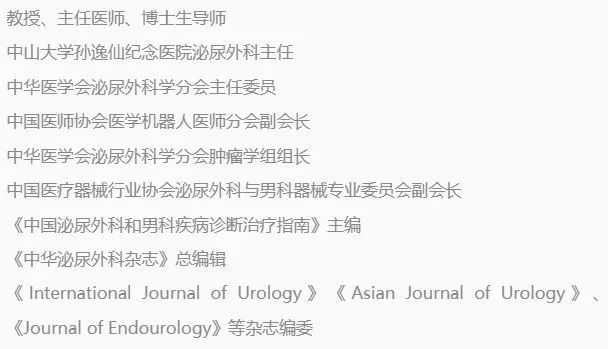
[1]Dean F. Bajorin,Johannes Alfred Witjes,Jürgen Gschwend,First results from the phase 3 CheckMate 274 trial of adjuvant nivolumab vs placebo in patients who underwent radical surgery for high-risk muscle-invasive urothelial carcinoma (MIUC).Meeting Abstract | 2021 GenitourInary Cancers Symposium
[2] Johannes Alfred Witjes, Dean F. Bajorin, Matthew D. Galsky, Results for Patients with Muscle-INVASIVER CANCER in The Checkmate 274 TRIAL ABSTRACT NUMBER 45855555555555555555555555555555555555555555555555555555555555555555555555555555555555555555555555555555555555555555555555555555555555555555555555555555
[3] Guidelines for the Diagnosis and Treatment of Urology and Diacutors (2019 Edition)
[4]Witjes JA et al. Muscle-invasive and Metastatic Bladder Cancer Guidelines. European Association of Urology. 2016. https://uroweb.org/guideline/bladder-cancer-muscle-invasive-and-metastatic/ Accessed June 21, 2016
*This article is only used to provide scientific information to medical people, and does not represent the viewpoint of this platform


- END -
Shanghai has added 3+6 in Shanghai, in these two districts; how to eat a meal to meet the requirements of epidemic prevention?

Shanghai Health and Health Commission notice this morning0-24:00 on June 18, 20223...
Double-resistant or union, who is PD-1 partner LAG-3 optimal solution

[Transfer] Double-resistant or combined therapy, who is the optimal solution of PD...